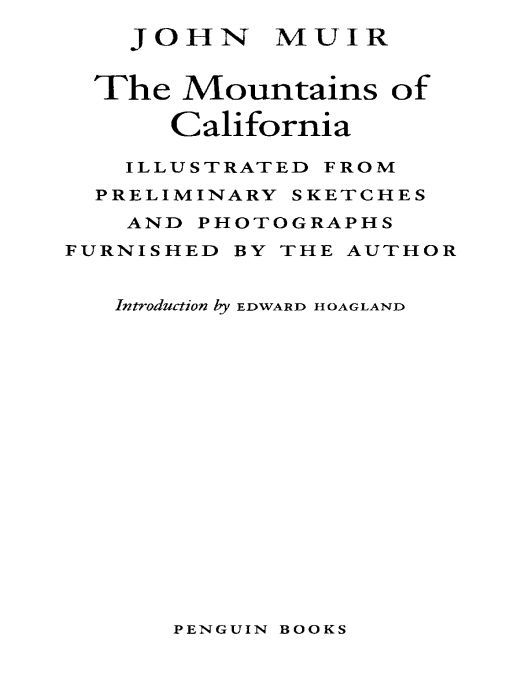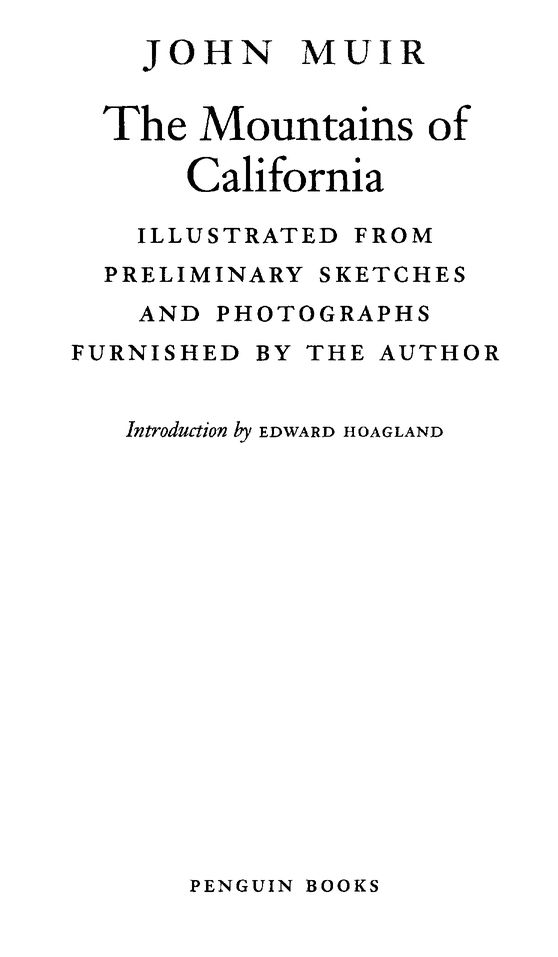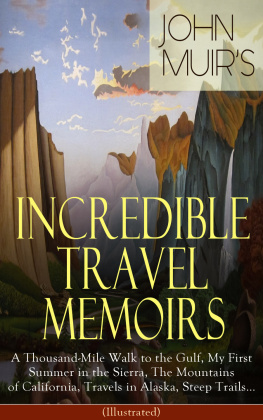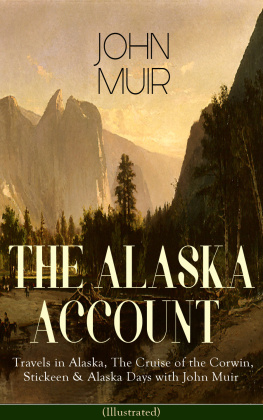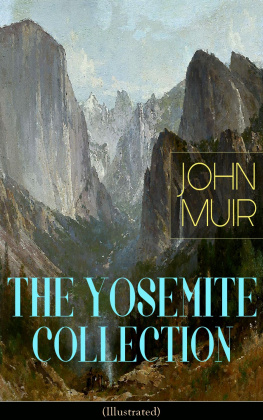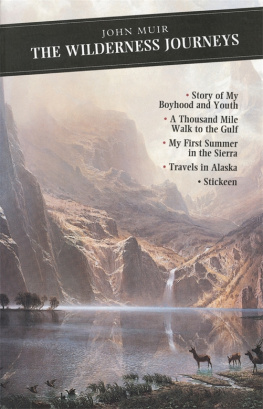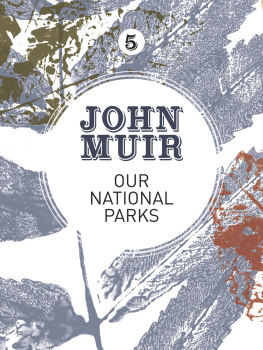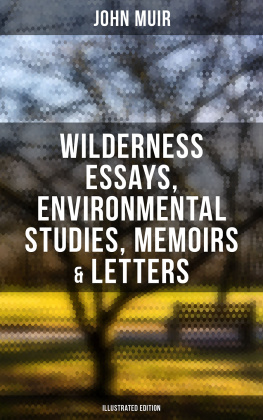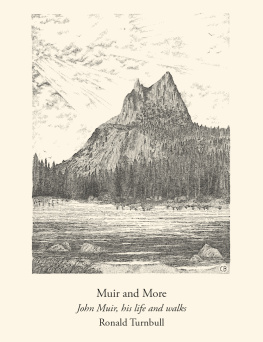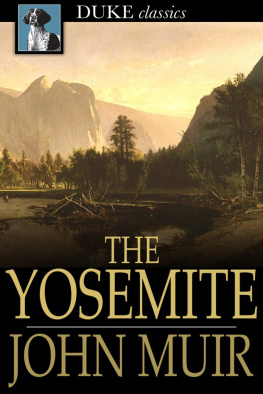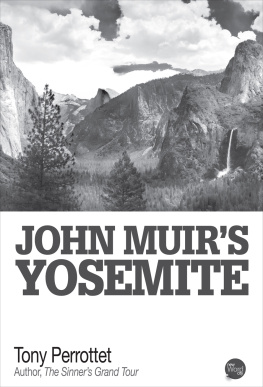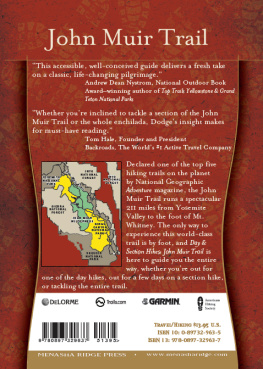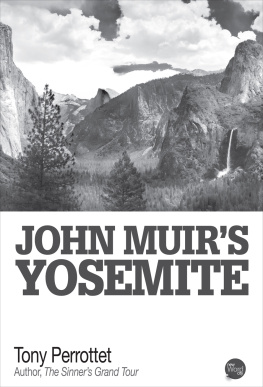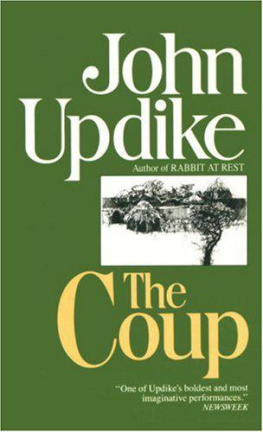Table of Contents
PENGUIN CLASSICS
THE MOUNTAINS OF CALIFORNIA
JOHN MUIR (1838-1914) was born in Scotland. In 1849 he emigrated with his family to the United States, where he later enrolled in courses in chemistry, geology, and botany at the University of Wisconsin. Muir made extended journeys throughout America, observing both scientifically and enthusiastically the beauties of the wilderness. The Mountains of California, his first book, was published in 1894. He eventually settled in California, where he became an impassioned leader of the forest-conservation movement. His writings include Our National Parks (1901), My First Summer in the Sierra (1911), The Yosemite (1912), Travels in Alaska (1915), A Thousand-Mile Walk to the Gulf (1916), and Steep Trails (1918).
EDWARD HOAGLAND is the author of fifteen books, most recently Balancing Acts. He lives in Vermont and teaches at Bennington College.
Introduction
We must go halfway with John Muir. He was more of an explorer than a writer, more confident of his abilities in botany and geology than of what he could do with the eagle-quill pens he liked to use (while encouraging a friends year-old baby to clamber about the floor, lending liveliness to the tedium of a writers room). He was a student of glaciers, cloud shapes, and skyscapesa lover of Sitka spruce 150 feet tall, of big sequoias, tiny woods orchids, and great waterfalls. He put together his books late in lifehe was fifty-six before The Mountains of California, his first book, was publishedfrom magazine articles, most of which had themselves been reconstructed well after the events described, from notes jotted down in the field with wildfire enthusiasm but little thought of eventually publishing them. Though he was a wonderful talker, he was never entirely respectful of the written word and was surprised to find that there was an audience willing to read him, amazed he could earn a living by writing. Being one of those people who give the freest and most buoyant portion of their lives to climbing and seeing for themselves, he doubtless wished that more of his readers preferred to hike on their own two feet into the fastnesses he had described.
Henry Thoreau lived to write, but Muir lived to hike. I will touch naked God, he wrote once, while glacier-climbing. And, on another jaunt, lunching on his customary dry crust of bread: To dine with a glacier on a sunny day is a glorious thing and makes common feasts of meat and wine ridiculous. The glacier eats hills and sunbeams. Although he lacked the coherent artistic passion of a professional writer, he was Emersonianism personified. There is a time-freeze, a time-warp to a river of ice, as if God had been caught still alive, in the act and at work. And because Muirs passions were religious and political instead of artistic, Muirunlike Thoreau, who in comfortable Concord only speculated that his Transcendental intuitions were rightput his life and his legs on the line in continual tests of faith in the arduous wilderness of the High Sierras. He believed if his intuitions were wrong, he would fall, but he didnt ask himself many questions about what was happening, as Thoreau would have, and didnt believe such exalted experiences could be conveyed to the page, anyway.
Thoreau welded together one of the enduring prose styles of the nineteenth century. He may be Americas paramount stylist, and also established in his spare time a famously disobedient stance toward the institutionalized cruelties of the world that later was to help Gandhi and, through Gandhi, Martin Luther King, in formulating mass-movement nonviolent campaigns, before dying at only forty-four, in 1862. Of course, he was in addition what we would call a conservationist, but not a militant, innovative one like Muir. Muir (1838-1914) was the founding president of the Sierra Club and chief protector of Yosemite Park. Thoreau, on the other hand, anathematized American Imperial conduct in the Mexican War and got still more exercised about slavery, angrily championing the early terrorist John Brown. Muirwho was all in all a more conventional soul in his politicseven after the end of the Civil War commented approvingly during a trek through Georgia that the Negroes here have been well-trained and are extremely polite. When they come in sight of a white man on the road, off go their hats, even at a distance of forty or fifty yards, and they walk bare-headed until he is out of sight.
Its important to recognize that such contrasts were not merely due to the fact that Muir was born twenty-one years after Thoreau and thus lived through the ambiguities of Reconstruction. Thoreau sought out the company of Indians on his trips to Maine and respectfully studied their customs, whereas Muir generally disparaged the Indians of California as ignoramuses and children, dirty and cultureless wretches. Not until his adventurous travels to Alaska in middle agehe took three trips during his forties, two in his fifties, and one tour to the Bering Sea by steamer at sixty-onedid he admit a semblance of tolerance into his view of Indians. And though as a conservationist he was highly advanced, a Vermonter named George Perkins Marsh, born back in 1801, proves to have sounded as modernist a tocsin as Muirs in a widely read book called Man and Nature, which came out in 1864. Thirty years before The Mountains of California, Marsh counterposed to the biblical theory that Nature was a wilderness mankind should subdue and rule, the idea that Man has too long forgotten that the earth was given to him for usufruct alone, not for consumption, still less for profligate waste.... We are, even now, breaking up the floor and wainscoting and doors and window frames of our dwelling.... The earth is fast becoming an unfit home for its noblest inhabitant, and another era of equal human crime and human improvidence ... would reduce it to such a condition of impoverished productiveness ... as to threaten the depravation, barbarism, and perhaps even extinction of the species.
Marsh was a complex personality who served four terms in Congress and twenty years as U. S. Ambassador to Italy, but he was a quiet visionary and public servant in the style of a New England Brahminnot a public figure, not the man of mounting celebrity that Muir became. Muir as lecturer, as Westerner, as John o the Mountains, learned, like Walt Whitman and Long-fellow, to wear a public sort of beard. Living to the ripe old age of seventy-six, he enjoyed three active decades that were denied to Thoreau and changed a good deal during the course of them. Although a far wilder naturalist, he had lived nearly as celibately as Thoreau for nearly as long. However, with no undue enthusiasm, he did marry, a week short of being forty-two. He then had two daughterswhom he deeply lovedand turned himself into a substantial, successful landowner and grape-farmer as well as a well-known writer and a force to be reckoned with in Sacramento and occasionally in Washington D.C. International lecture tours, friendship with Teddy Roosevelt, honorary degrees from Harvard and Yalein these extra years he knew rewards that Thoreau had never aspired to, yet remained an adventurer to the end, traveling to Africa, South America, and Asia late in life. Only Jack London and John James Audubon among American artists come to mind as adventurers with a spirit to compare with his, and for both of them adventuring was more closely tied to ambition.

